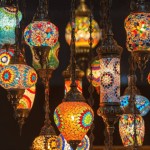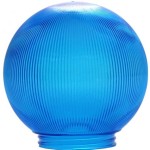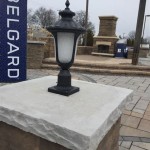Outdoor Group Portrait Lighting Techniques
Photographing groups outdoors presents a unique set of challenges concerning lighting. The unpredictable nature of natural light, the varying skin tones within a group, and the need to create a cohesive and flattering portrait all contribute to the complexity of this genre. Mastering outdoor group portrait lighting requires a thorough understanding of available light, supplemental lighting options, and posing techniques that maximize the effectiveness of the chosen lighting strategy.
Successful outdoor group portraits rely heavily on the photographer's ability to control and manipulate the available light. This involves recognizing the qualities of different types of natural light, understanding how they interact with subjects, and employing various techniques to modify or supplement that light for optimal results. The goal is to create images that are well-lit, evenly exposed, and that flatter each subject while maintaining a natural and pleasing aesthetic.
Understanding Natural Light
Natural light is the primary source of illumination in outdoor photography, and its quality varies significantly depending on the time of day, weather conditions, and location. The most common types of natural light encountered in outdoor portrait photography are direct sunlight, open shade, and overcast light.
Direct sunlight, while abundant, is often the least desirable for portraiture. It creates harsh shadows, intense highlights, and can cause subjects to squint. When shooting in direct sunlight, it is crucial to position the group so that the sun is behind them, effectively using it as a backlight or rim light. This can help to separate the subjects from the background and create a sense of depth. However, it necessitates the use of fill light, either from a reflector or a flash, to illuminate the subjects' faces and avoid underexposure in the shadows.
Open shade, found in the shadow of a building, tree, or large object, provides a softer, more diffused light that is generally more flattering for portraits. The light is even and less contrasty, reducing the risk of harsh shadows and blown-out highlights. When shooting in open shade, it is important to ensure that the background is brighter than the subjects to create separation and prevent the image from appearing flat. This can be achieved by positioning the group closer to the edge of the shade, allowing some sunlight to illuminate the background.
Overcast light, produced by a thick layer of clouds, diffuses the sun's rays and creates a very soft and even light. This type of light is ideal for portraits as it minimizes shadows and highlights, resulting in a smooth and natural-looking skin tone. However, overcast light can also be somewhat dull and flat, so it is often necessary to add a touch of warmth or contrast in post-processing to bring out the subjects' features and create a more visually appealing image.
Using Supplemental Lighting
While natural light can be sufficient in certain situations, supplemental lighting is often necessary to overcome challenges and enhance the overall quality of outdoor group portraits. This is particularly true when shooting in direct sunlight or when seeking to create a specific lighting effect. The two most common types of supplemental lighting used in outdoor portraiture are reflectors and flashes.
Reflectors are simple and inexpensive tools that can be used to bounce light onto the subjects' faces, filling in shadows and adding a touch of brightness. They are particularly useful when shooting in direct sunlight or open shade, where they can help to balance the exposure and create a more flattering light. Reflectors come in various sizes and colors, each offering a different effect. White reflectors provide a soft, neutral light, while silver reflectors offer a brighter, more specular light. Gold reflectors add warmth to the skin tone, which can be beneficial in cooler lighting conditions. The placement of the reflector is critical to its effectiveness. It should be positioned at an angle that allows it to bounce light onto the subjects' faces without being visible in the frame.
Flashes provide a more powerful and controllable form of supplemental lighting. They can be used to fill in shadows, overpower the sun, or create specific lighting effects. Flashes come in various forms, including speedlights and studio strobes. Speedlights are small and portable, making them ideal for on-location shooting. They can be mounted on the camera's hot shoe or triggered remotely. Studio strobes are larger and more powerful, offering greater control over the light output. They typically require an external power source and are often used with modifiers, such as softboxes and umbrellas, to shape and diffuse the light. When using flash in outdoor portrait photography, it is important to balance the flash output with the ambient light to create a natural-looking image. This can be achieved by adjusting the flash power, aperture, and shutter speed.
High-speed sync (HSS) is a feature available on some flashes that allows the photographer to use a faster shutter speed than the flash's sync speed. This is particularly useful when shooting in bright sunlight, as it allows the photographer to overpower the sun and create a shallow depth of field. Without HSS, the photographer would be limited to using the flash's sync speed, which is typically around 1/200th of a second. This can result in overexposed images and a limited ability to control the depth of field.
Posing and Composition
Effective posing and composition are essential for creating visually appealing and flattering outdoor group portraits. Posing should be natural and relaxed, while composition should be balanced and harmonious. The goal is to create an image that is both aesthetically pleasing and that accurately represents the subjects.
When posing a group, it is important to consider the individual heights and body types of the subjects. Taller subjects should be placed towards the back of the group, while shorter subjects should be positioned in the front. This will help to create a balanced and visually pleasing composition. It is also important to vary the poses of the subjects to avoid a static and boring image. Subjects can be posed standing, sitting, or leaning, depending on the environment and the desired effect. Encourage interaction between the subjects to create a more natural and engaging image.
Consider the background and surrounding environment when composing the shot. Avoid distracting elements, such as brightly colored signs or parked cars. Look for a background that complements the subjects and adds to the overall mood of the image. Use the rule of thirds to create a balanced and harmonious composition. Place the subjects along the intersecting lines or at the points where the lines intersect. This will help to draw the viewer's eye to the subjects and create a more visually appealing image.
Eye contact is crucial in portrait photography. Encourage the subjects to look directly at the camera to create a connection with the viewer. If the group is large, it can be difficult to get everyone to look at the camera at the same time. In this case, it can be helpful to use a technique called "the count." Count down from three to one and tell the subjects to look at the camera on "one." This will help to ensure that everyone is looking at the camera at the same time.
Consider the clothing worn by the subjects. Dark clothing can absorb light and make the subjects appear smaller, while light clothing can reflect light and make the subjects appear larger. Avoid clothing with busy patterns or logos, as these can be distracting. Coordinate the clothing colors to create a cohesive and visually appealing look. Earth tones and complementary colors generally work well for outdoor portraits.
By understanding the principles of natural light, supplemental lighting, posing, and composition, photographers can consistently create stunning and memorable outdoor group portraits. The key is to be adaptable, creative, and to prioritize the comfort and well-being of the subjects.
The Friedman Archives Blog Outdoor Lighting For Group Portraits

How To Take A Group Photo Poses Composition Lighting

How To Use Off Flash For Portraits Outdoor Photography

How To Pose And Light A Group Shot With Just One Sdlight

A Group Shot Sdlighter Ca
.jpg?strip=all)
Outdoor Family Portraits With Light Painting Mischa Photography

How To Take A Group Photo Poses Composition Lighting

Wedding Photography Lighting Large Groups

How To Take A Group Photo Poses Composition Lighting

The Family Strobist Style Photography Photo Memories Inspiration
Related Posts







